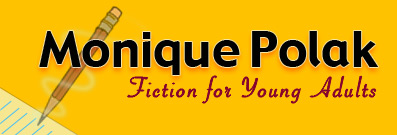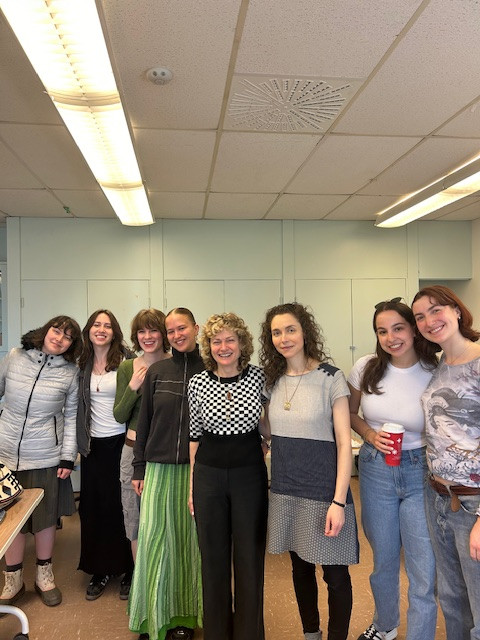




It's been many years since I was in a classroom at McGill University, where I got my BA degree in English Literature about forty years ago! But I was there this morning to speak with Professor Emily Kopley's "Holocaust Memoirs" class. I had about an hour-and-a-half with the students (that's Professor Kopley to the right of me in today's pic) and let's just say that when class was over, I didn't want to leave. School visits -- whether to elementary or high schools, and now to a university -- make me realize how much I miss having a class of my own!
The class is exploring some very complex questions -- can a subject as serious as the Holocaust be approached through fiction? And if so, how? How can books for children address the subject of the Holocaust? What is the role of survivors in passing on their stories -- and what about their children and even their grandchildren?
The students had read two of my books: What World Is Left, a novel based on my mother's childhood experience in Theresienstadt, a Nazi concentration camp; and The Brass Charm, a picture book inspired by a touching incident at the camp.
Basically, I talked about how the stories came to be -- and how I feel as if my role on Earth was to write What World Is Left. Some of the students were, like me, related to Holocaust survivors, but I had the impression that they all got it when I spoke about family secrets, and the power and importance of sharing difficult stories.
Sometimes, I instantly like a class -- which is what happened for me today. The first student I met, Matthew, spotted me wandering in the hallway of the Education Building, and led me into the classroom. I told the students they could interrupt with questions at any time during my talk, but they waited till I was done. And their questions really got me thinking -- in fact, I couldn't answer some of them! A student named Alice asked, "Why did you write your book [What World Is Left] for that demographic?" To be honest, I don't really know why I did. It just felt right to me. And I explained, I seem somehow to have remained fifteen years old (in my head anyway!!). A student named Eden asked me a similar question: "How can you tell if it's a children's book?" I explained that some books are what are known as crossovers -- meaning they cross over into different markets (so,, for example they become popular with kids and adults). But I shared one observation -- if your narrator is a kid (and not an adult looking back at being a kid), there is a good chance you are writing a kids' story.
A student named Shay (pronounced Shy) wanted to know about my relationship with Marie Lafrance, the illustrator of The Brass Charm -- and whether we worked together on the project. I explained that I didn't meet Marie (who has since become a friend) until after our book came out, but that I did see her sketches while she was working on her illustrations for the book. And as I told Shay, unless you are an amazing artist, it's generally wiser to try to sell an unillustrated manuscript.
I had a few lovely moments in the hallway after class. A student named Michelle asked me whether I was interested in writing about inter-generational trauma. I told her, "I've been waiting for a sign" -- to which she responded, "Maybe I'm your sign." And before Professor Kopley and I walked home together from McGill, a student named Milica told me a little about her background and that she wants to be a writer too. Go, Milica, go!
I should have mentioned that it was Total Eclipse Day here in Montreal -- and so it seems as if all Montrealers were united in our excitement. Class ended in time for us all to get to our viewing spots -- with our eclipse glasses for protection. But even before the eclipse, my day was already a wonderful gift. Thanks to Professor Kopley for the invite, and to every student in your class for your gentle, wise attention today.
When you subscribe to the blog, we will send you an e-mail when there are new updates on the site so you wouldn't miss them.
Comments